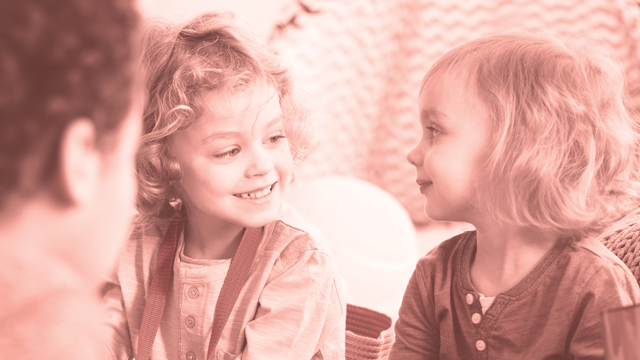
My 2-year-old son is biting other toddlers at our childcare center and I don’t know where to start. Do you have recommendations to stop this behavior?

Ouch! This hurts on many levels, doesn’t it? Thoughts swirl in our heads: Why did he bite? Is the other child hurt? And the obligatory, Am I a bad parent? The first two thoughts can be helpful, but don’t fall into the trap of the third one. The fact that you are asking the question proves you are on the case. It’s yet another parenting season to move through, and you will both be just fine.
First, let’s talk about the typical 2-year-old. Most 2-year-olds don’t have the words required to get what they want. And they want control. A child this age lives totally in the moment, and the emotional part of his brain rules. So his big feelings take over very easily. He needs the security of knowing the clear limits for acceptable social behavior and he needs to learn alternatives to biting.
Since it sounds like your child is already in a pattern of biting at the childcare center, start by talking to his teacher. She (or he) has seen this before, trust me. As soon as you can, have an honest conversation and formulate a plan in which home and school responses reinforce each other. Together, determine the triggers. They may be social. For kids this young, being with other children indoors for thirty or forty minutes can be overwhelming. Play is still mostly solitary or side by side with friends. Sharing is not easy, so frustration can build quickly. Once you’ve determined this is a trigger, the teacher can be vigilant about bringing him to a quiet corner at regular intervals to play by himself, refocus, and calm down. You can do the same at home.
Other triggers are often stress from too-busy schedules, not enough down time with mom and dad, and lack of sleep. Toddlers need positive attention from you, predictable schedules, and ten to twelve hours of sleep at night, plus a nap. The happy news is that all of these triggers are completely manageable. Agree with your partner on how to make intentional changes and try to simplify. Furthermore, this behavior is common in toddlers and is not an indicator of future issues with violence or unwanted aggression.
I urge you to resist two often-used, but unhealthy methods: giving him a digital device to play with to calm him down, or biting him yourself. The first will rob him of learning to calm himself. I like the expression, Kids need laps, not apps. The second teaches that violence in return for violence is acceptable behavior. Biting your child punishes him with pain instead of teaching him to stop and find alternatives to aggression.
When he does bite, and he will, both parent and teacher need to be ready to move swiftly to correct and redirect. Stop the biting with a firm but calm statement, like “No biting!” or “No, that hurts!” Next, remove him from the situation. Have something handy he can bite down on like a teether or soft towel. Remind him firmly and repeatedly, saying “Teeth are for biting food, not people” or “Show me how to be kind.” It may take weeks or months, but with persistence, consistency, and teamwork, he will show you, and his friends, that he can, indeed, be kind.





